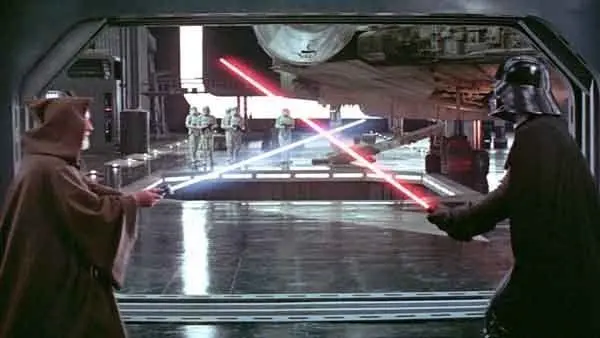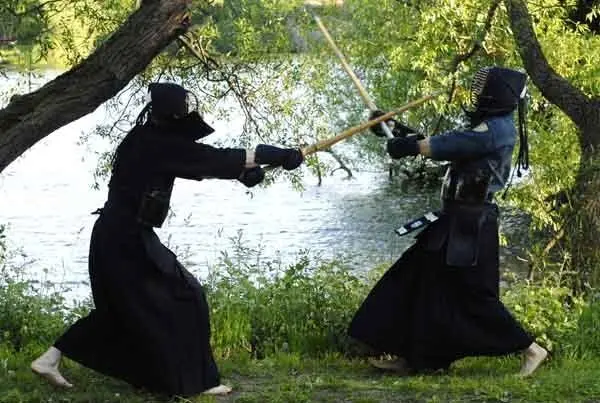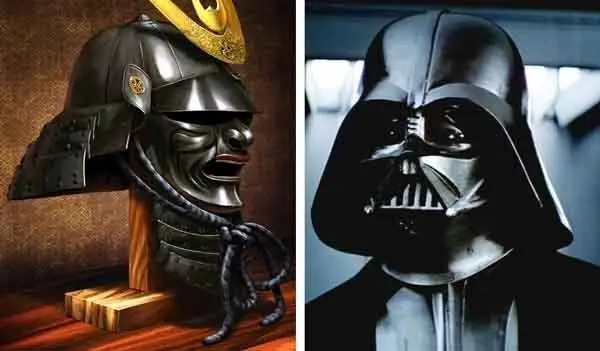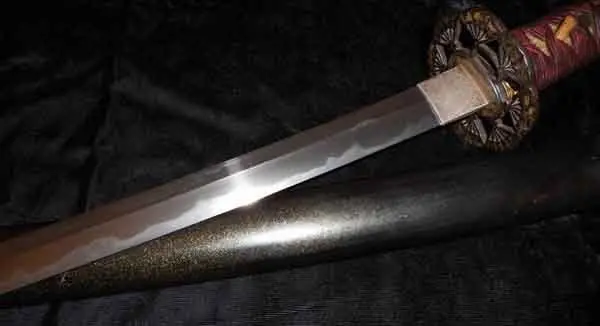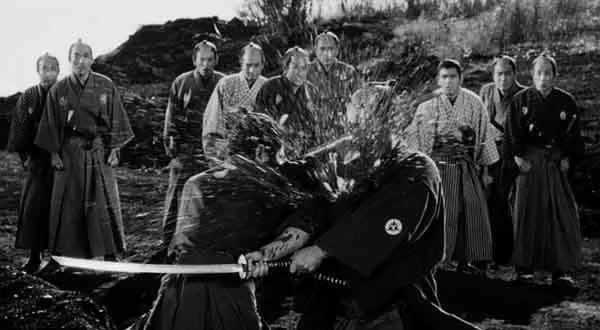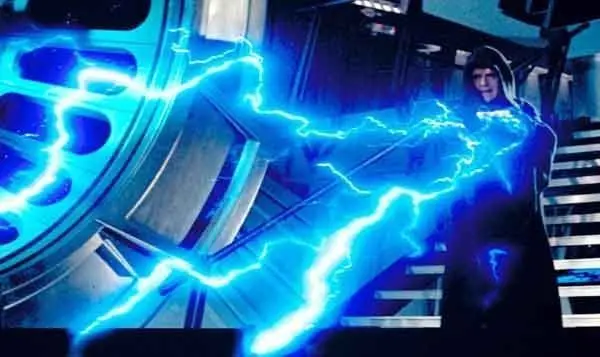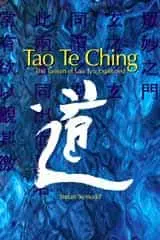|
Qi Energy Exercises
|
Qi and the Star Wars Force ComparedQi Similarities with the Force of Star Wars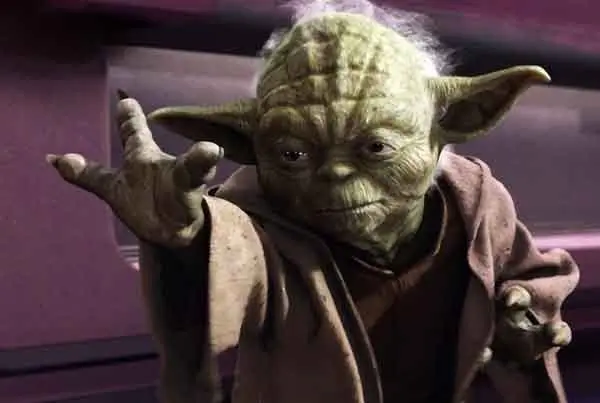 Yoda of Star Wars uses his force. Qi, the life energy, has many striking similarities with the Force of the Star Wars movies. Here they are discussed and compared.
Already at my first encounter with the Star Wars movies and their cosmology, back in the 1970s, it struck me how close they were to the Japanese martial arts, such as kendo fencing. I had practiced aikido for some years, so I was familiar with those Japanese traditions and concepts. Two things in particular made the comparison obvious: The Force in Star Wars has so much in common with qi (spelled ki when referring to the Japanese and not the Chinese language), and the Jedi warriors have so many similarities to the samurai culture of old Japan. Let's start with the latter.
Jedi SamuraiThe Jedi of Star Wars are elite warriors with phenomenal abilities and skills, among which the Force is the most impressive. They have cultivated their use of the Force with long and strenuous exercises of the mind as well as the body.This fits very well with the Japanese samurai culture. This aristocracy was a ruling warrior class with special privileges. All their lives, they practiced the art of war, especially fencing. In this practice, the idea of cultivating ki, the life energy, was central. There are plenty of legends about masters among them, able to perform superhuman feats, mainly by utilizing their ki after many years of training. Also, they were expected to live up to ideals of nobility and purity, though that was far from always the case. A samurai should fearlessly defend his lord to the death. The original meaning of the word samurai is simply servant. There is more. The Jedi style of fencing, starting in low centered guards, and with two-handed grips of the swords, is very similar to that of the samurai. Even their clothing has similarities, with the generous amount of fabric in robes or capes reaching the floor. The Jedi don't wear hakama, the very wide trousers of the samurai as well as modern kendo fencing practitioners. But still their attire makes similar silhouettes, at the very least.
Katana and Light SabreJust as legendary as the samurai is his favorite weapon: katana, the samurai sword, world famous for its sharpness and the tremendous craft skills needed to make it. The sword is even one of Japan's three regalia (the sword, the mirror, and the jewel).The deadly samurai sword and the skills needed to utilize it have inspired countless tales and myths. With just that weapon, a master samurai could alone defeat a horde of enemies — and quickly, too.
George Lucas and KurosawaI bet the many samurai influences on the Jedi of Star Wars stem from the samurai movies, in particular those of the Japanese director Akira Kurosawa. Already in the late 1950s and early 1960s, he made movies that became popular around the world, especially among film buffs.The most famous ones are Seven Samurai from 1954 and the two films about the ronin (samurai without a master) Sanjuro: Yojimbo from 1961 and Sanjuro the following year.
He was even co-producing (together with Francis Ford Coppola) the Kurosawa movie Kagemusha from 1980. In his samurai movies, Kurosawa explored the heroism and skills of the samurai, as well as their shortcomings. Some of the most impressive samurai abilities shown are close to surreal, but Kurosawa did not explore specifically the ki life force as it was applied by the samurai in their training and battles.
The Qi Behind the ForceThe inner spiritual force used by the samurai is definitely the qi (or ki) to which this website is dedicated. Qi, according to the ancient tradition, is many things. The source to exceptional personal power and ability in the martial arts is definitely one of them.That is also the nature of the Force in Star Wars. It seems to be accessible only to the clan of Jedis. And its major — if not only — use is as a weapon extraordinaire of those warriors. What else does it do, but make them invincible to anyone but their own kind?
AnimismStill, George Lucas has a wider perception of his concept than a mere force to make a warrior victorious. This is what he said when working on The Empire Strikes Back from 1980 (quote from Wikipedia):
Also qi is described as a life force existing in everyone and everywhere. It has its roots in animism, the ancient belief in such a force, permeating the world. Variations of that belief exists in many cultures and has done so as far back as our records reach. Often animism includes the belief that everything has a kind of soul and thereby also a will of its own. Qi is not of that kind, though. It is an energy without a will or identity. The one using it decides what to do with it, be it what others would call good or bad. But George Lucas seems to suggest that the Force is animism in the broader sense. As he describes it in the quote above, the Force is sort of a big soul of which we are all parts — the living as well as the deceased. Individual life is just temporary, and then we go on as parts of that universal soul.
Good and BadSo far, he kind of agrees with many animist beliefs. But the good and the bad side of that Force is more problematic. If it is omnipresent, how can it be divided in that or any other way? And what makes it part good and part bad?Religions believing in good and bad, and Christianity is certainly one of them, see those opposite aims as driven by two separate entities or powers. Not two sides of the same universal force. Good and bad is complicated. Who should be the judge? Most religions and mythologies avoid making that distinction, at least not in any permanent way. They speak more of what is good for one and bad for another. Also the Bible warns against the difficulties, when God says to Adam and Eve not to eat the fruit from the tree that gives knowledge of good and evil (Genesis 2:17). George Lucas is likely to have gotten the idea of the Force being partly good and partly bad from Christian beliefs of a good force above and an evil one below — and all humans doomed to spend eternity in one domain or the other, regardless of their own wishes. In most other mythologies, deities can be good as well as bad, depending on circumstances. Humans, too. I can't think of a religion claiming that there is some universal force making people good or bad, without their own say-so. The dark side of the Force does not have an equivalent in qi. But the Force as a force accessible to man does. Just as for the Jedi, this force can be cultivated, and stronger in some than in others. Cultivation of it is what makes it stronger, whatever amount of it you may be born with. As for qi, the idea is that it's accessible to all who put in the effort. The Force, on the other hand, seems to be an exclusive resource to some people, while others have no chance of awakening it. The Jedi warriors keep it to themselves. That's not far from how the samurai of the past preferred to see it. They regarded themselves as superior to other people in just about every way. But qi makes no such discrimination. Nor should any force of which we are all parts.
Degenerated ForceWhen Yoda was introduced to the Star Wars universe, in The Empire Strikes Back from 1980, he used the Force simply by concentrating and extending his hand, even when lifting a whole spaceship from the swamp. That's cool. It's also close to the concept of qi and how to extend it. The Force is invisible, although its effect is not.But by the end of the first Star Wars trilogy, things had changed. In the final battle of Return of the Jedi from 1983, the emperor waves his hands and sends out a multitude of blue flashes. Special effects take over.
Stefan Stenudd
My Books About Life EnergyHere are the two books I have written on the subject of life energy. This website contains some of the material from the first one. Click the image to see the book at Amazon (paid link).
About CookiesMy Other WebsitesLife EnergyThe many life force beliefs all over the world, ancient and modern, explained.
TaoisticTaoism, the old Chinese philosophy of life, based on Tao, the Way. Also, the complete Tao Te Ching translated and explained.
AikidoAikido, the peaceful martial art. Its basics, principles, techniques, and more — in texts, images and videos.
I Ching OnlineThe 64 hexagrams of the Chinese classic I Ching and what they mean in divination. Free online reading.
Other Books by MeClick the image to see the book at Amazon (paid link).

Stefan StenuddAbout Me I'm a Swedish author and aikido instructor. I've written several books about aikido, qi energy and other life force concepts. I'm also an historian of ideas, researching the thought patterns in creation myths. Click the image to get to my personal website. Contact
|
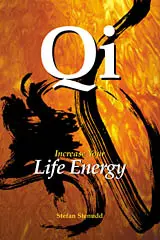 Qi — Increase Your Life Energy
Qi — Increase Your Life Energy